Ten Things You Should Not Miss When Visiting Rizal Shrine in Intramuros
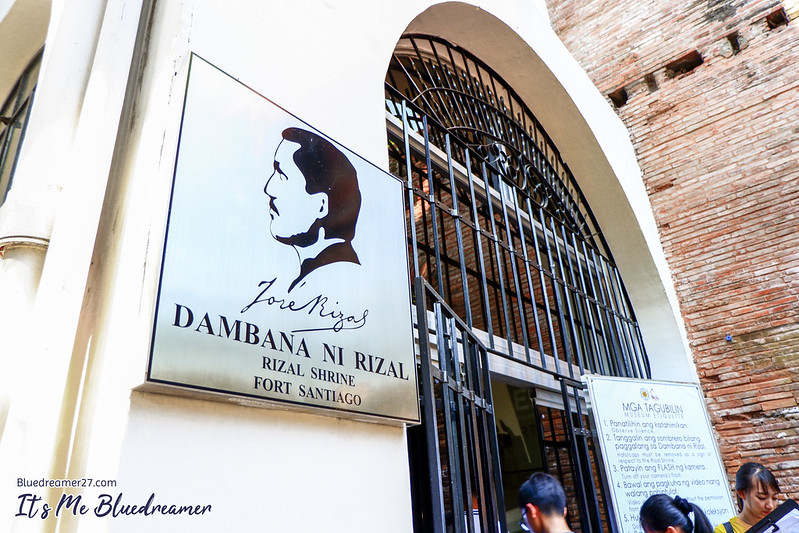
During our Wartime Manila Tour (organized by Don’t Skip Manila) few weeks ago, one of the interesting attractions that caught most of our attention is the Rizal Shrine. The Shrine is located within Fort Santiago, just few meters away from the Rajah Sulayman Theater. Interestingly, the Shrine is a museum that is dedicated to the lifework of our national hero. It is very important to note that this is the exact place where he was imprisoned and spent his final night before his execution.
The museum houses several memorabilia as well as items with very huge historical significance. Currently, there are six galleries in the museum with each features different themes and relics reflecting the life an achievements of Jose Rizal. The Museum was built in 1953 and was renovated in 1996 as part of the Centennial celebration of Rizal’s martyrdom and the Philippine revolution.
Interestingly, there is NO entrance fee to the Shrine but since the museum is located within the Fort Santiago so you still have to pay for Php 75 in order to access the place. Check : Let’s Explore Manila : Fort Santiago. Before you reach the main entrance to the shrine, you will be greeted with stunning ruins.
 The brick ruins are actually part of the oldest building in Fort Santiago. The structure was built in 1593 which also served as barracks for Spanish soldiers. During American period, army officers and their families lived here. The building however was utterly destroyed during the second world war.
The brick ruins are actually part of the oldest building in Fort Santiago. The structure was built in 1593 which also served as barracks for Spanish soldiers. During American period, army officers and their families lived here. The building however was utterly destroyed during the second world war.
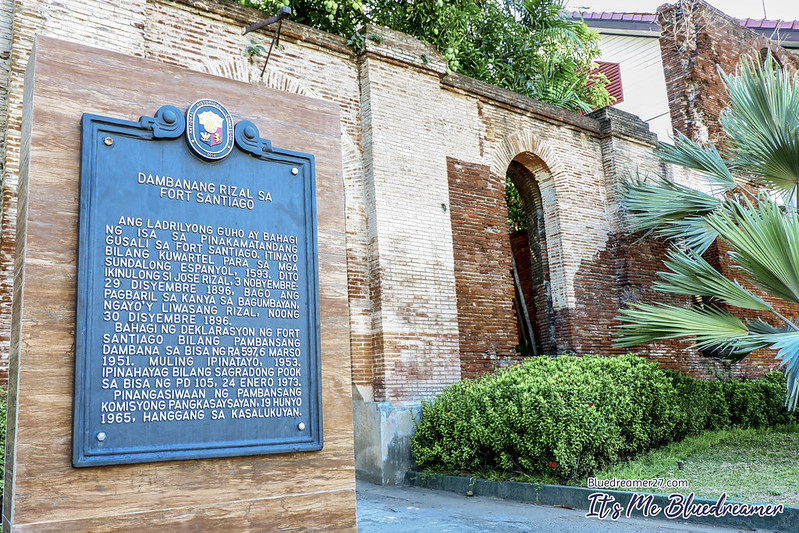
Historical marker outside the shrine.
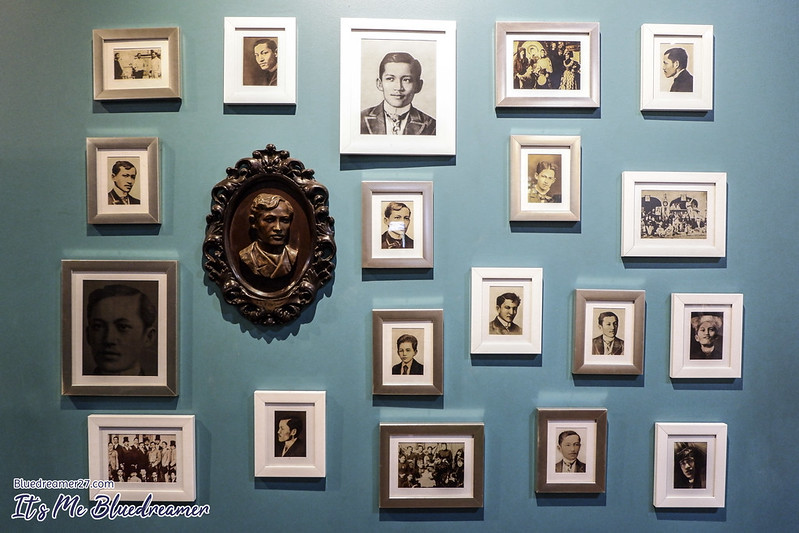
Different portraits of Rizal
Now , without any further ado, allow me to list down ten of the most interesting items you can find in Rizal Shrine in Intramuros.
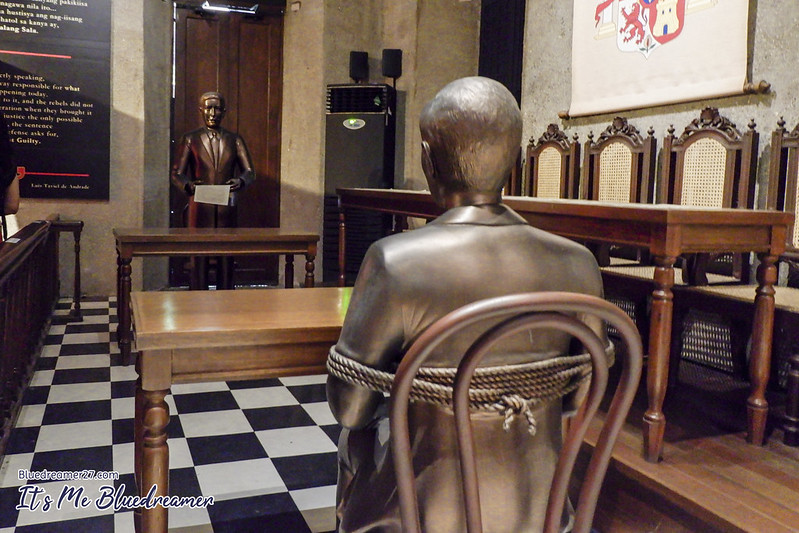
Silid Paglilitis
Silid Paglilitis or the Trial Room is among one of the first galleries you will encounter when you enter the museum. The room features life-size statues that replicates Rizal’s trial at the Cuartel de España through a dramatic light and sound presentation.
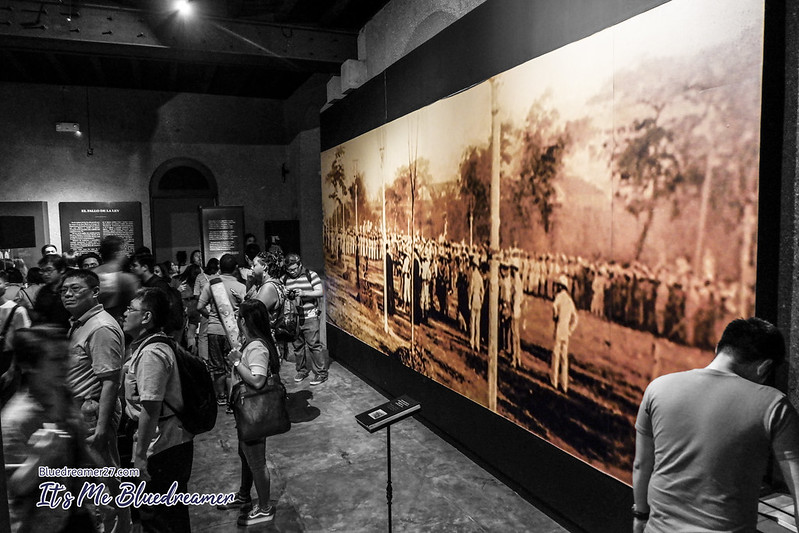
Fusilamiento de José Rizal
In one of its galleries, you’ll find a huge painting showing Rizal’s execution. This is actually not a painting but an enlarged copy of a real photo. This photo has become a subject of seemingly endless arguments and debates because some historians are doubting its authenticity. According to Mr Arnaldo of With Ones Past, the picture was captured by Mr Dumas, a French-Spaniard, who was an old resident of the city. However, some people are claiming that the picture was just a still from a 1912 movie. You can also check a life-size representation of Rizal’s execution in Rizal Park: Check: Let’s Explore Manila : Rizal’s Execution Site

Martyrdom of Rizal Mural
Another interesting item you’ll find within the Rizal Shrine is the huge painting known as the Martyrdom of Rizal. The painting depicts the execution of Philippine National Hero Dr. Jose Rizal at Bagong Bayan (now Rizal Park) on December 30, 1896. The huge mural was done in 1960 by a National Artist for Virtual Arts, Carlos “Botong” V Francisco.

Rizal’s Vertebra
Another interesting piece that is absolutely worth-seeing in this shrine is the piece of Rizal’s vertabra on display. Located in their “Kabayanihan Gallery” is a piece of Rizal’s vertabra where the bullet hit him during the execution. It is enshrined in a reliquary.

Rizal’s Prison Cell
Jose Rizal spent his last hours in his cell before his execution in Bagumbayan (Rizal Park). In his actual prison cell lies a life size wax effigy of Jose Rizal depicting the time when he is writing his final masterpiece – the Mi Ultimo Adios. The wax sculpture was made by another National artist – Guillermo Tolentino (National Artist for Sculpture).
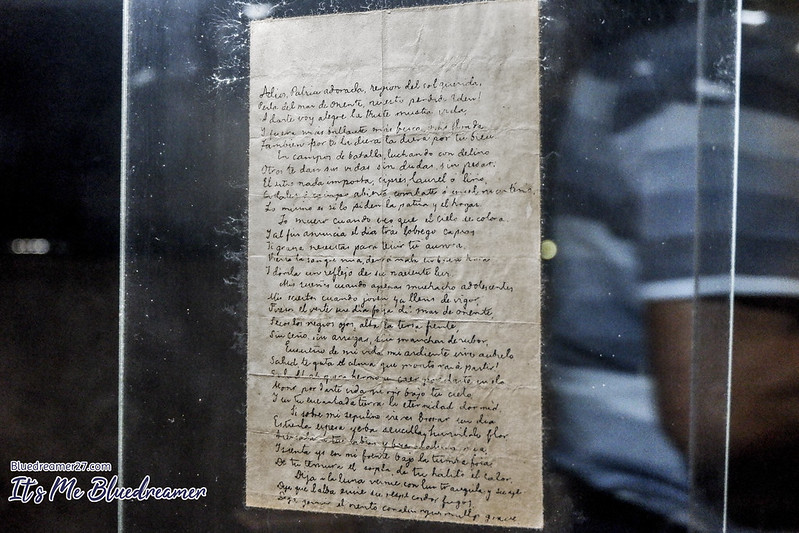
Mi Ultimo Adios
Of course, one of the things you should not miss when visiting Rizal Shrine is the original copy of Rizal’s last note before his death. Rizal hid the letter inside a small alcohol stove. The stove was given to Narcisa by the guard when the party was about to board their carriage in the courtyard. At home, the Rizal ladies recovered a folded paper from the stove. On it was written an unsigned, untitled and undated poem of 14 five-line stanzas.It was Mariano Ponce who titled the poem Mi Ultimo Adios. The original letter is displayed in the Kabayanihan Gallery along with the alcohol lamp.
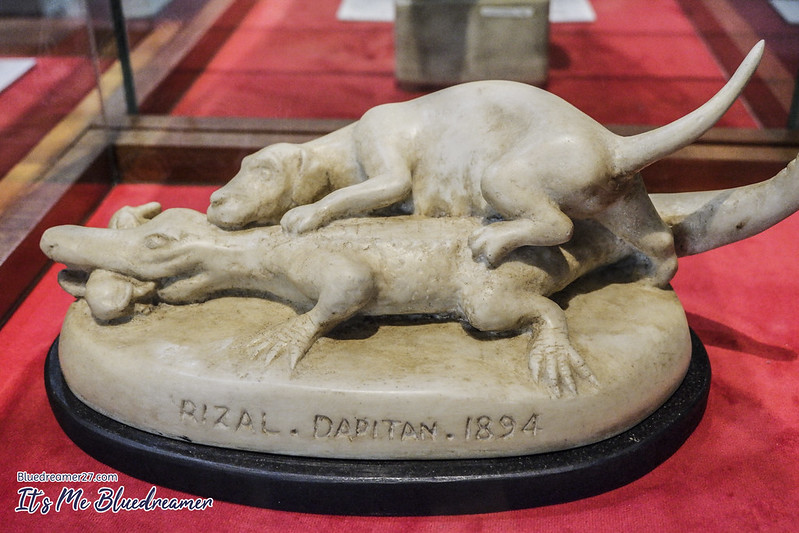
Sculptures of Rizal
Rizal was not just a great writer but also a wonderful sculptor. Rizal Shrine’s Silid Pamana gallery houses some reproduced copy of Rizal’s sculptures as well as original sketches and photographs. Some of the sculptures displayed on the shrine are replicated copies of various artists including the “Mother’s Revenge (Paghihiganti ng Ina)” recreated by Guillermo Tolentino (The Original sculpture is displayed in National Museum of Finearts, “Prometheus Bound”; the original sculpture of “The Triumph of Science over Death” and more.
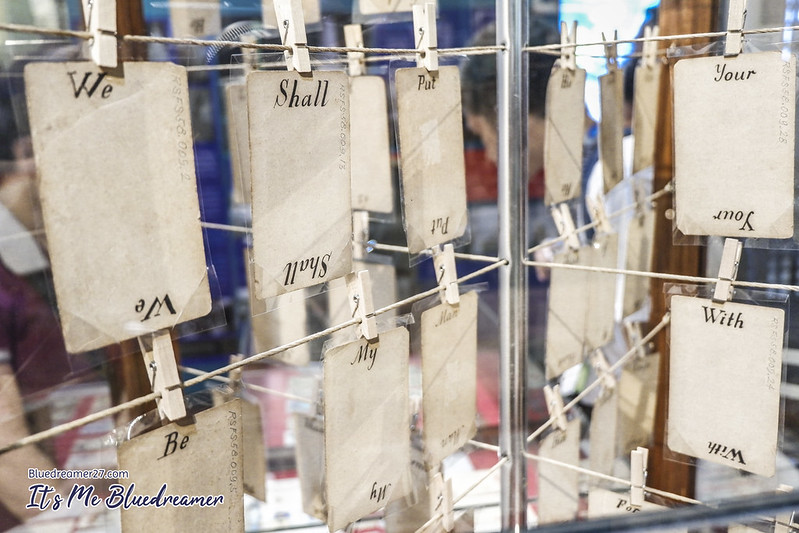
Rizal’s Typography
Who would have thought that Rizal is also an amazing calligrapher? During his time in Dapitan, Rizal decided to create his own business card. Also he made flash cards to teach English to kids. Also in display is a Prescription Issued by Rizal which showcases his handwriting as a medical practitioner.
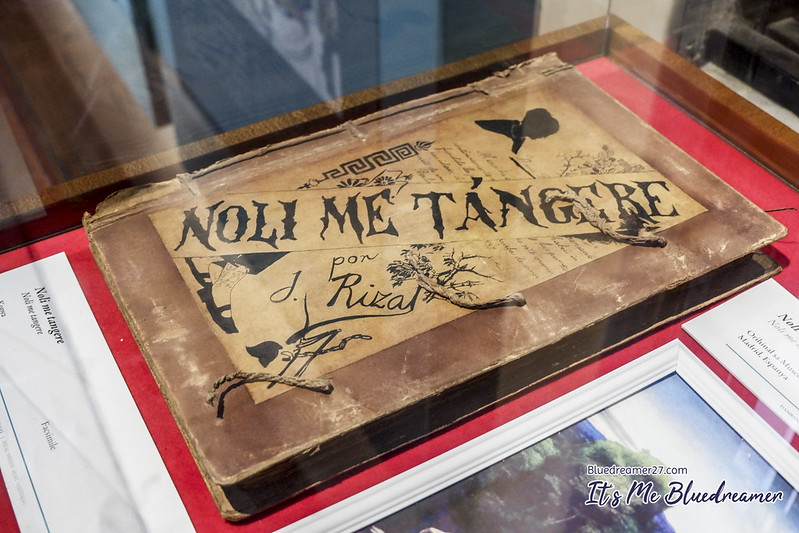
Noli Me Tangere
Of course, one of the masterpiece of Jose Rizal can also be found in Rizal Shrine. A well preserved copy of Noli Me Tangere is displayed in this museum. In fact, the museum is about the celebrate the 132nd Anniversary of the Publication of Rizal’s first novel. Along with this copy is Pascual H Poblete’s Tagalog Translation of Noli Me Tangere which was published in 1909 with the help of Saturnina Rizal de Hidalgo (Jose Rizal’s sister).
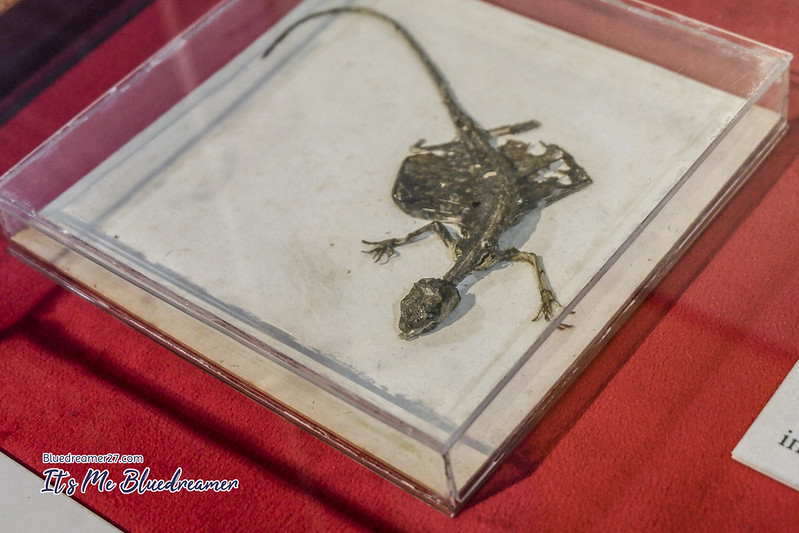
Draco Rizali
Animals Named After Rizal
Another interesting set of display that can be found in Silid Pamana Gallery are the specimens of insects and reptiles which are actually named after our national hero. When Rizal was exiled in Dapitan, he collected different kinds of species of animals. Among them were latere named Draco Rizali (Wandolleck), a specie of flying dragon, Rachophorous Rizali (Boetger), a hitherto unknown specie of toad and Apogonia Rizali (Heller), a small beetle, which were later named after him.
You might also be interested with these articles
►12 Artworks You Should See in National Museum of Fine Arts
►A Day in National Museum of Anthropology
►Let’s Explore Manila Series
►Wartime Manila Tour




Pingback: Historical Sites You Can Visit That Commemorate Jose Rizal - It's Me Bluedreamer!